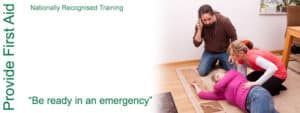Burn injuries can be one of one of cpr melbourne the most unpleasant and stressful experiences one can endure. Whether it's a minor cooking area accident or a severe melt from a mishap, comprehending the phases of melt injury recovery is critical for effective treatment and recuperation. In this write-up, we will certainly dig deep into the complexities of melt wounds, their classification, healing processes, and important care techniques.
Understanding Burn Wound Recovery Stages: Healing Insights
Burns are categorized into various degrees based upon their extent, each needing specific medical focus and treatment. The healing process involves distinctive phases that must be recognized to make sure proper administration and rehabilitation.
What Are the Various Types of Burns?
Burns are typically classified into three primary types:

First-Degree Burns: These influence only the external layer of skin (epidermis). Signs and symptoms consist of soreness, mild swelling, and pain.
Comprehensive Melbourne First Aid CoursesSecond-Degree Burns: These expand right into deeper layers of skin (dermis), creating sores, serious discomfort, and swelling.
Third-Degree Burns: These include all layers of skin and might harm hidden tissues. They appear white or charred and can be pain-free because of nerve damage.
Each kind necessitates differing degrees of clinical treatment and home treatment strategies.
The Recovery Process: An Overview
1. Hemostasis Phase
Immediately after a melt injury happens, the body initiates the hemostasis phase to quit any kind of blood loss. Blood vessels constrict to decrease blood circulation to the afflicted location while platelets aggregate to develop a clot.
2. Inflammatory Phase
This stage follows hemostasis and typically lasts for 3-5 days post-injury. It includes:
- Increased blood flow to provide immune cells. Swelling as liquids accumulate in the tissue. Pain as nerve endings become sensitized.
3. Proliferative Phase
Taking location from regarding day 3 to week 3 post-burn, this stage consists of:
- Formation of brand-new cells via collagen deposition. Re-epithelialization where new skin cells migrate throughout the injury bed. Angiogenesis-- the formation of new blood vessels-- to supply nutrients to healing tissues.
4. Improvement Phase
This last stage can last a number of months to years after a burn injury and is marked by:
- Maturation of collagen fibers. Decreased vascularity as frameworks mature. Potential for scar development depending upon severity.
Importance of Specialized Burn Dressings: Necessary Burn Supplies for Home Care
Proper clothing is crucial in handling melt wounds effectively in your home. Specialized burn dressings serve several purposes:


- They safeguard versus infections by producing an obstacle against pathogens. They keep wetness while enabling gases exchange which is essential for healing. Some dressings have antimicrobial residential properties that protect against infection.
It's crucial to choose suitable dressings based on shed level and size. For example, hydrogel dressings are typically suggested for second-degree burns due to their cooling effect.
Scar Monitoring: Recovering After Major Burns
Once a burn has actually healed, scar administration becomes necessary for restoring feature and appearance:
Silicone Gel Sheets: Applying these aids squash elevated marks over time. Massage Treatment: Motivating blood circulation can enhance elasticity in mark tissue. Laser Therapies: Doctor might advise these for much more extreme scarring cases.Common False impressions Regarding Burn Treatment
CPR Constantly Reactivates Heart Myth: Debunking Common Burn Therapy Misconceptions
One prevalent misconception surrounding CPR is that it constantly reactivates the heart; nevertheless, this isn't true-- CPR raises chances of survival yet doesn't ensure heart activity returns to quickly after cardiac arrest. Recognizing such misunderstandings can assist in providing exact first aid throughout emergency situations entailing burns or other extreme injuries.
FAQs about Burn Wound Healing
1. What must I do promptly after sustaining a burn?
Answer: Cool the location under running water for at the very least 20 mins and cover it with a tidy fabric or specialized dressing if necessary.
2. How much time does it take for burns to heal?
Answer: Healing times differ by burn level; first-degree burns normally heal within a week while second-degree burns can use up to three weeks or more depending on severity.
3. When should I look for medical attention for a burn?
Answer: Seek professional aid if you have second-degree burns larger than 3 inches or any third-degree burns, no matter size.
4. Can I make use of ice directly on a burn?
Answer: No, applying ice directly can create additional skin damages; use cool (not cold) running water instead.
5. Is there any effective natural home remedy for burns?
Answer: Aloe vera gel has relaxing properties that might help with small burns but consult healthcare providers regarding considerable injuries.
6. How do I recognize if my burn is infected?
Answer: Indications consist of raised soreness, swelling, pus discharge, high temperature, or aggravating pain; seek prompt clinical recommendations if you think infection.
Conclusion
Understanding melt wound recovery phases is necessary not just for clients however likewise caregivers that provide support during recuperation stages. Knowledge regarding specialized treatments-- like specialized dressings-- and aggressive scar administration dramatically impacts lasting outcomes after significant burns occur.
Through awareness campaigns that emphasize safety around typical hazards like campfires or cooking area equipment-- such as crinkling irons-- we can avoid several cases prior to they happen! By understanding just how to respond with effective emergency treatment skills (like those instructed in HLTAID012 training courses), you empower yourself with beneficial tools that secure lives throughout emergency situations entailing burns or other severe injuries.
In summary, understanding truly is power when dealing with prospective emergencies related to burns-- from understanding therapy methods like chemical or electrical burns emergency treatment guidelines down via various child-centric complications seen within education and learning setups-- every detail issues in making sure safety!
This thorough guide intends not just to notify but also motivate self-confidence in taking care of complex scenarios effectively-- nevertheless-- prevention incorporated with prompt intervention conserves lives!